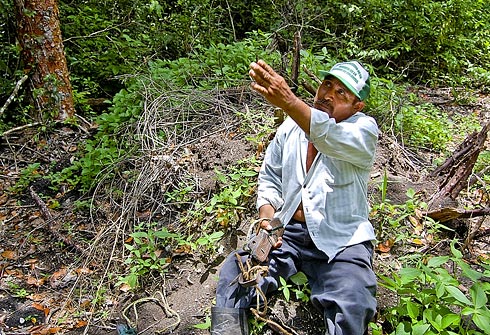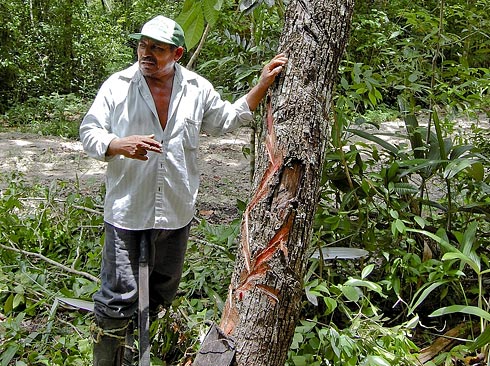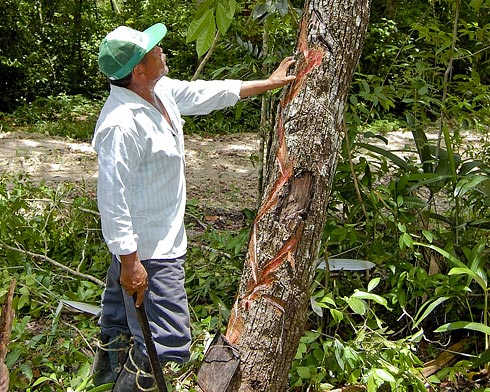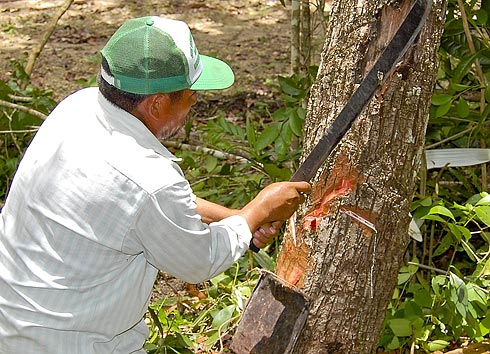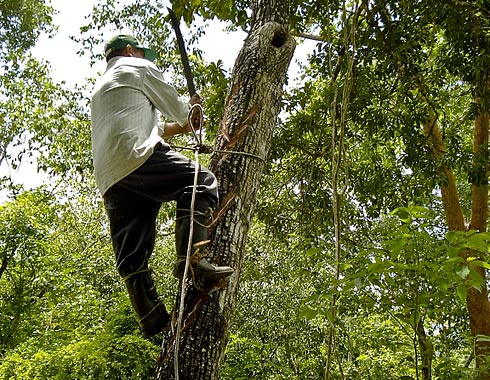Carrying on the Chicle Trade Can Help Save the Rain Forest
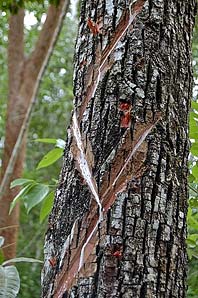
The harvest of chicle has been a sustainable use of the rain forest for decades. Chicle was the raw ingredient for chewing gum before synthetic components were developed. However, the real chicle is still being used in some countries, mostly China and Japan, so a market for the product still exists.
Chicle comes from the sap of the sapodilla tree or chico zapote and it is collected by workers called chicleros. Similar to tapping maples trees for sap to make syrup, collecting chicle can be done for years without damaging the tree. In the tropics of Central America, this activity takes place in the rainy season.
Elias Cahuich is one of the chicle tappers. The 57-year-old native wields a big machete to slice progressively higher diagonal cuts into the moist bark of a chico zapote and lets the white sap drip down into a collection bag at the base of the tree. The latex-like sap is later strained, boiled and shaped into 10-kilo (22 pound) bricks that are sold to companies that still make chewing gum from the natural ingredient. Tapping the trees this way does not harm them. The red gashes in the bark seal, and the tapped trees are recognizable by their climbing “X” marks.
Diagonal cuts made in the bark of the sapodilla tree show that it has been used for years to harvest chicle. The wounds seal and the tree continues to grow.

Elias says, “My father was a chiclero. He taught me how to work with chicle when I was 20 years old and I’ve been doing it ever since. Now my son is following in my footsteps.
“In this ejido there are seven of us who still practice chicle extraction. All my colleagues are happy about the way the work is going. Based on a study that was done on the capacity of the forest, we have the permission and capacity to take out 15 tons of chicle per year. We’re only at one or two tons now. If there’s more demand for chicle, I believe that as long as prices are good, we’ll just work and extract more.
“The good thing about chicle is it doesn’t run out and it doesn’t destroy the forest. You don’t just go and cut into every tree. We tap a tree and then we leave it for 10 or 12 years before tapping again. Nothing is destroyed and the forest stays intact. It’s an ecological process.”
Although chicleros like Elias Cahuich continue the tradition, there are fewer tappers than in the past. Effective conservation can only be achieved if the needs and aspirations of local people are met. The Nature Conservancy’s work with support from Rain Forest Rescue and the help of local partners like Tropical Rural Latinoamericana aims to conserve the forest while at the same time improving income opportunities for local people and helping them seek new markets for their sustainably produced goods.
Next: Birds, Other Wildlife and People All are Benefitting from Rain Forest Rescue in Belize
Save 2,500 square feet of rain forest today
Read more information on our projects in these countries:
Or read and print the full report on one page.


